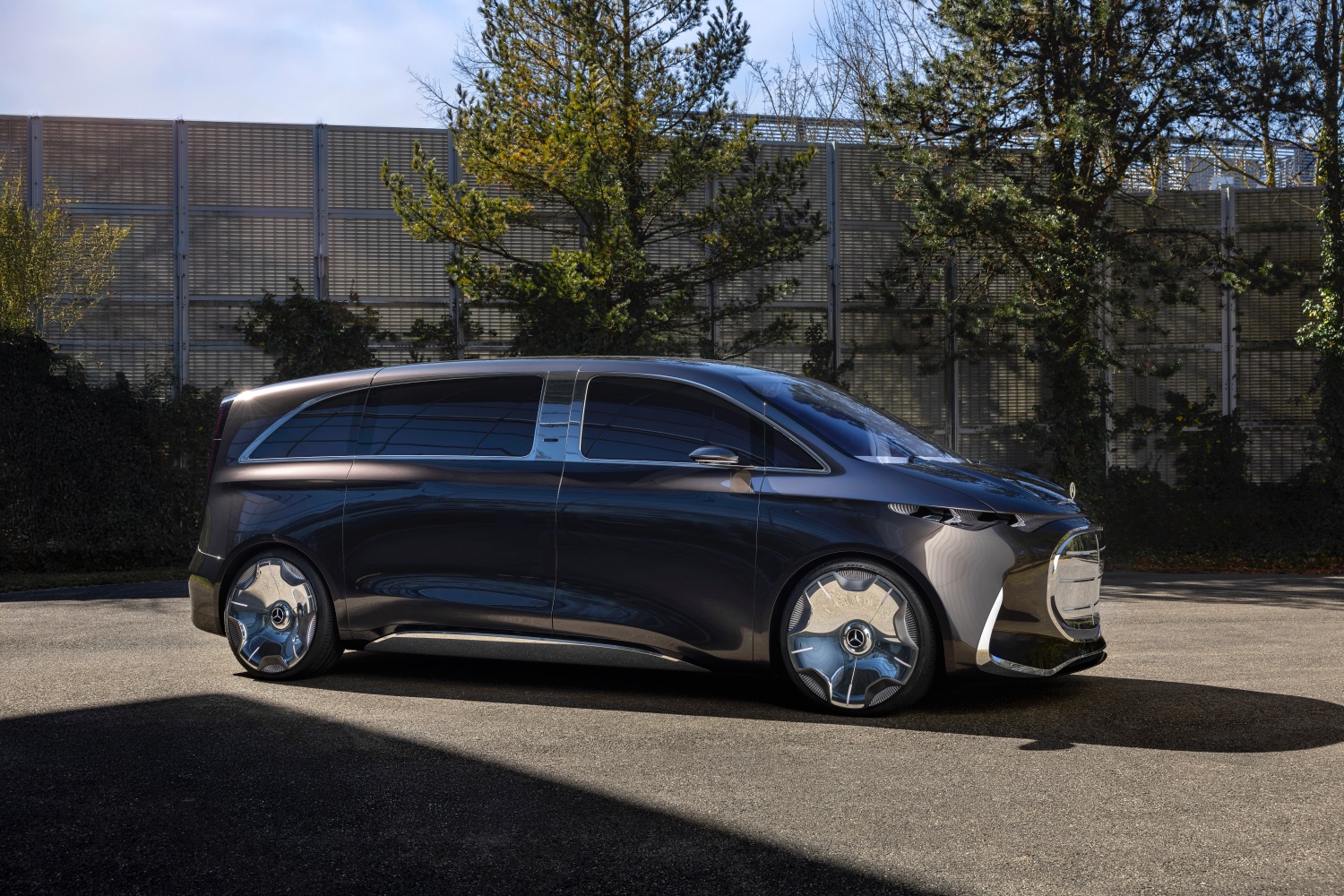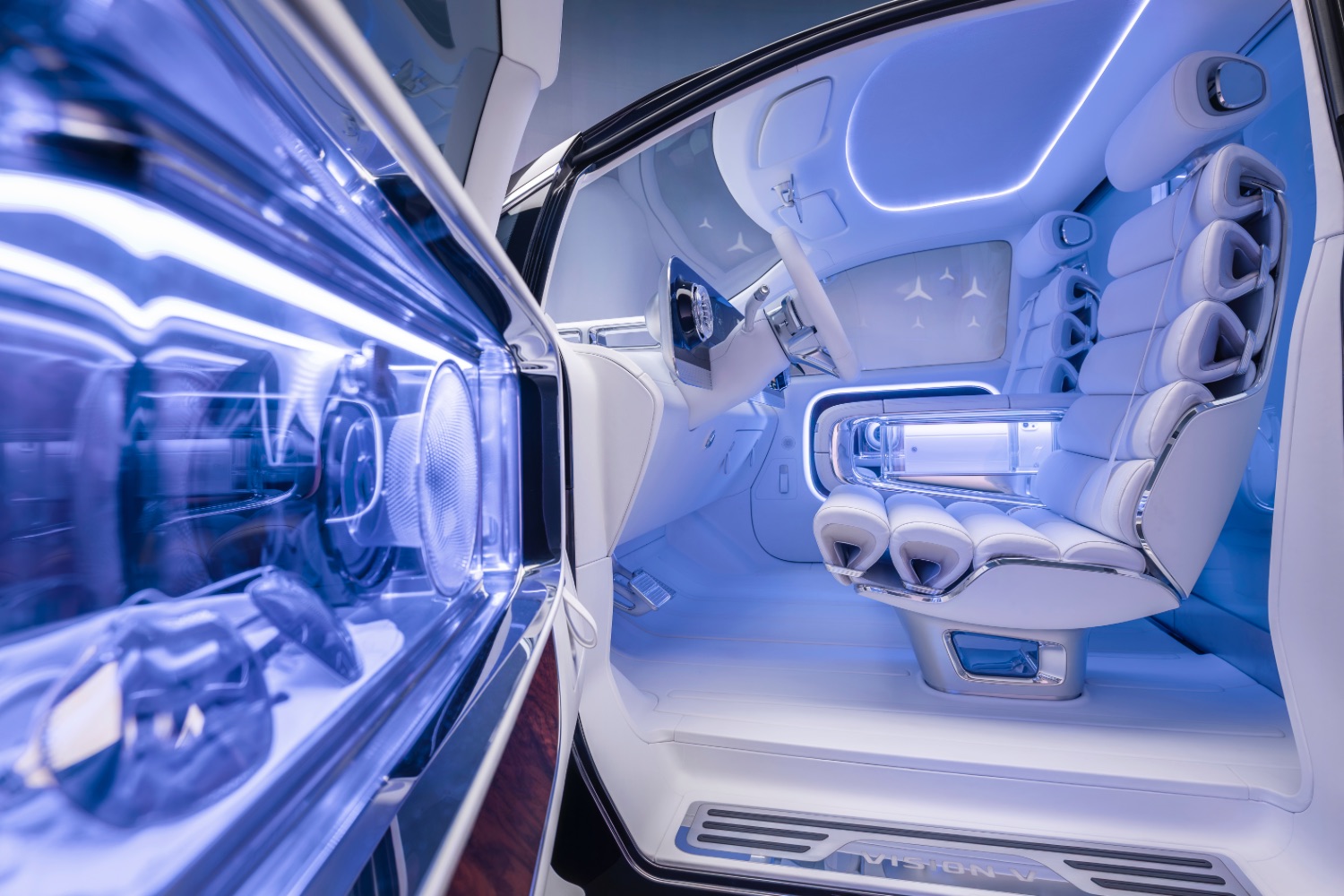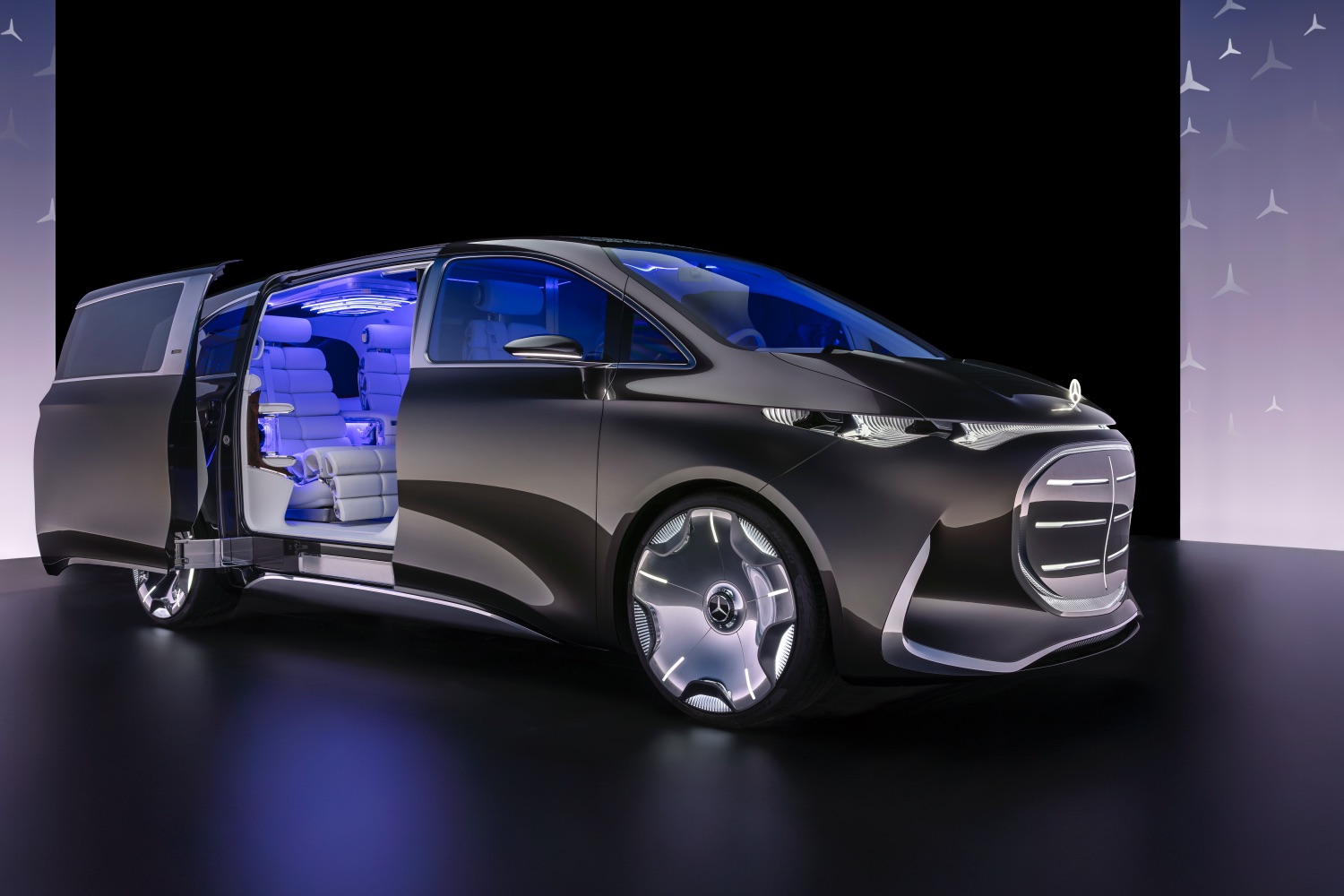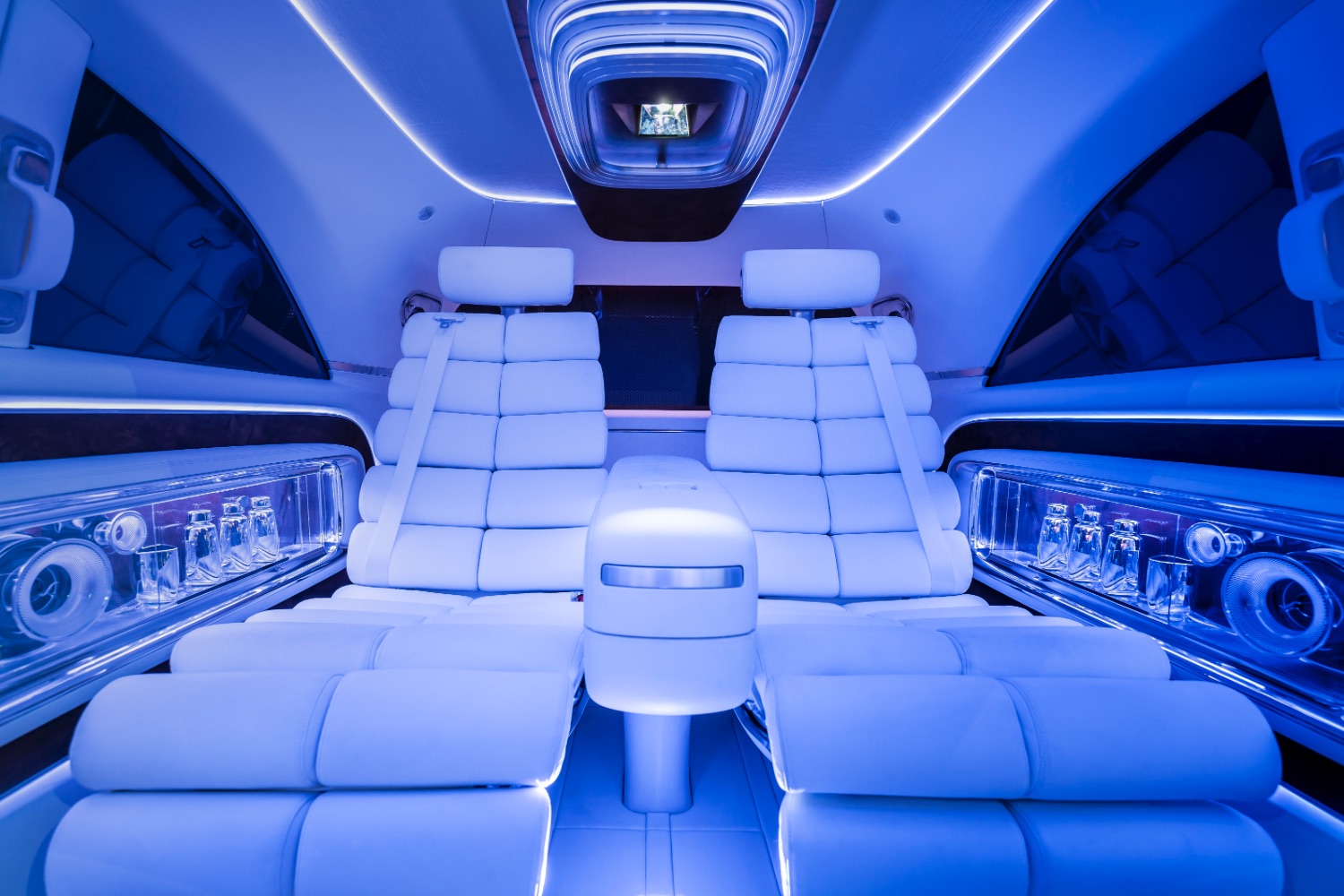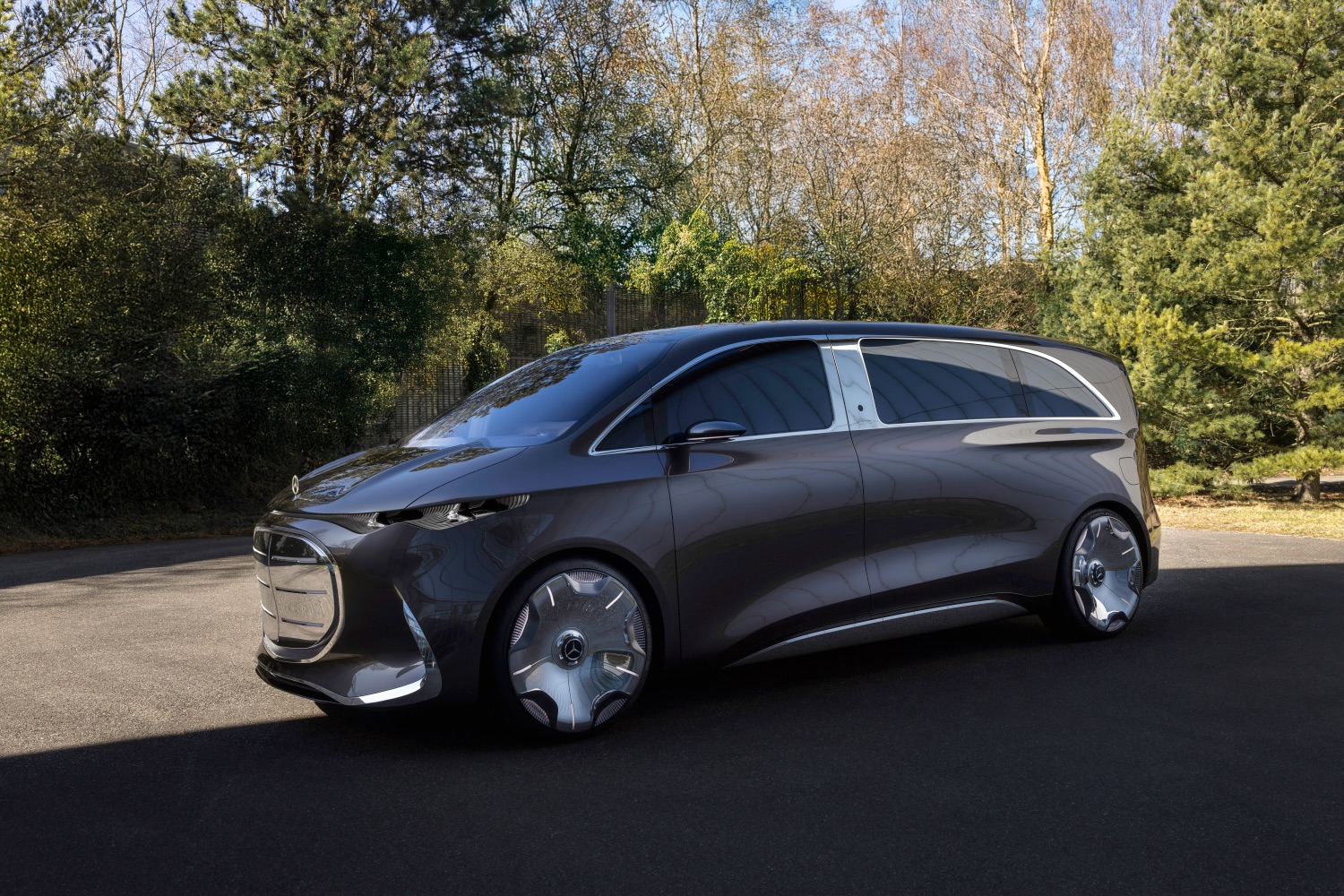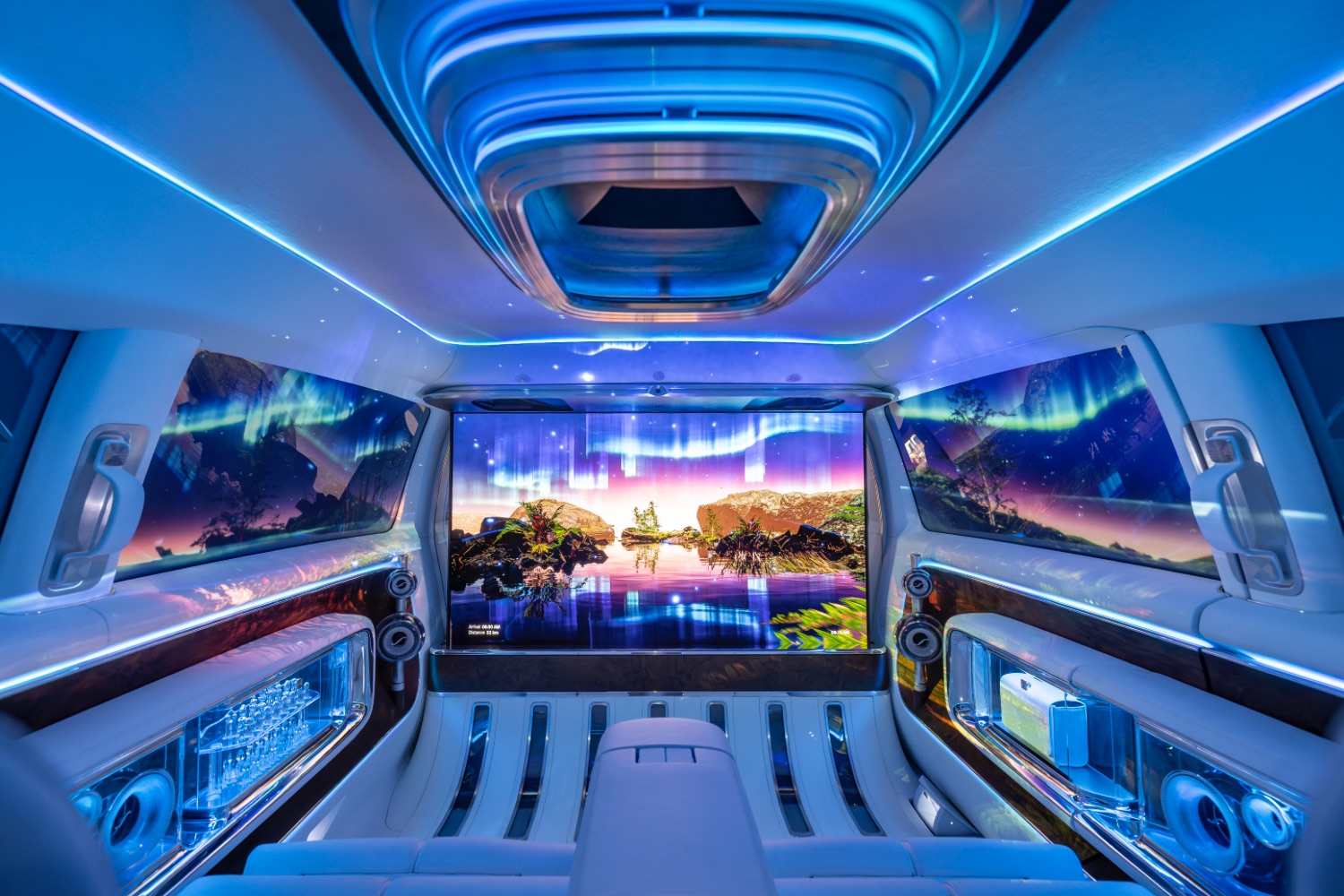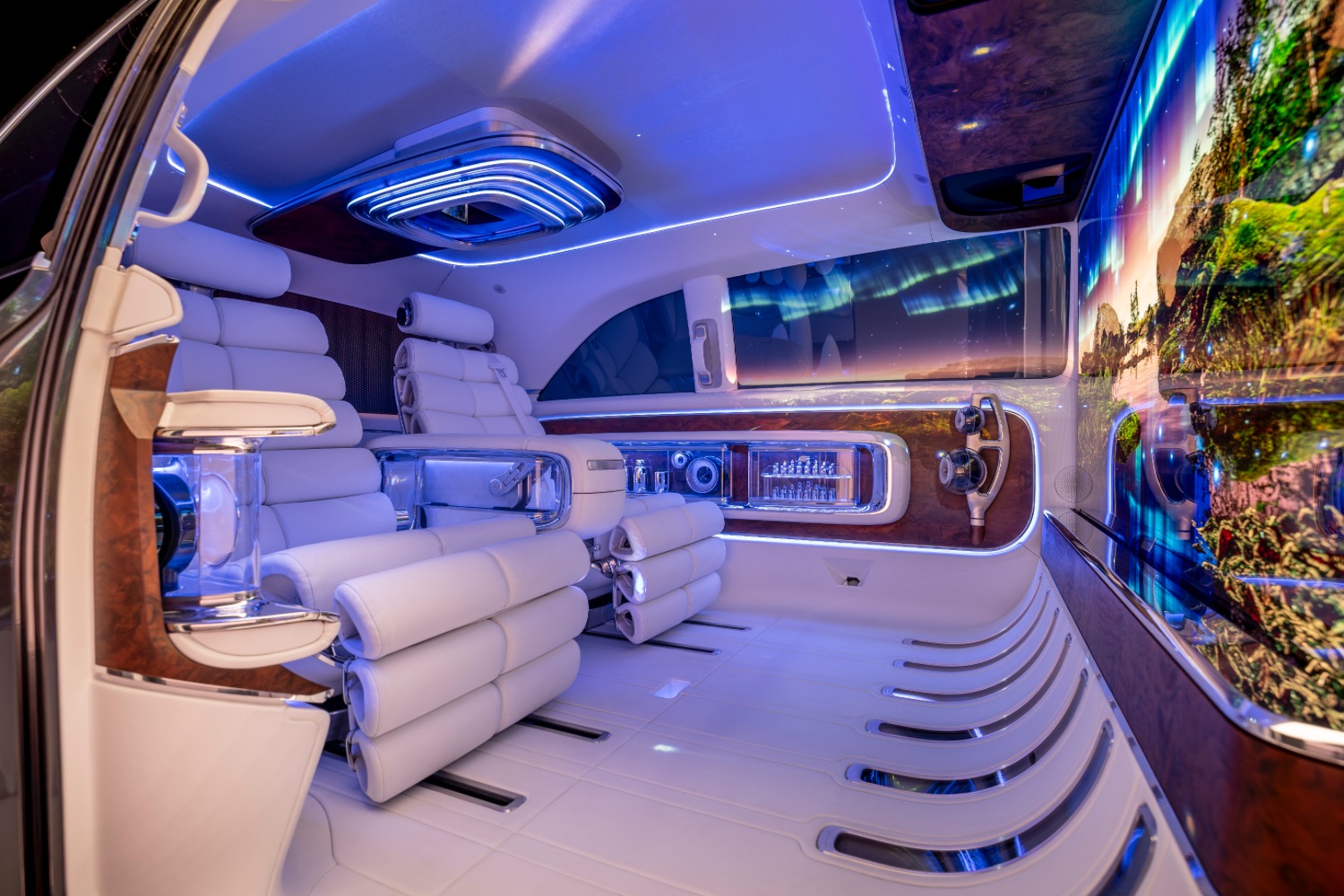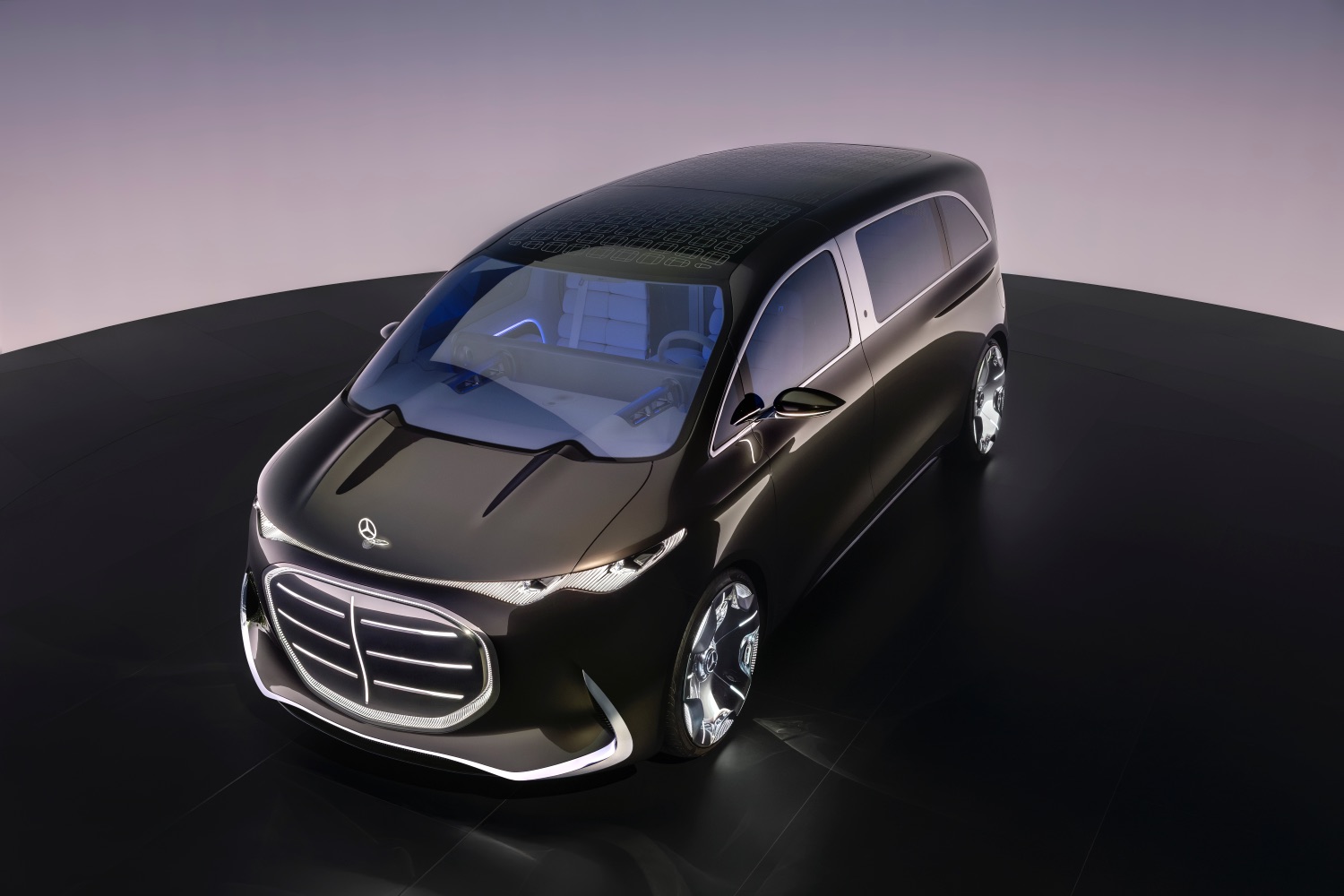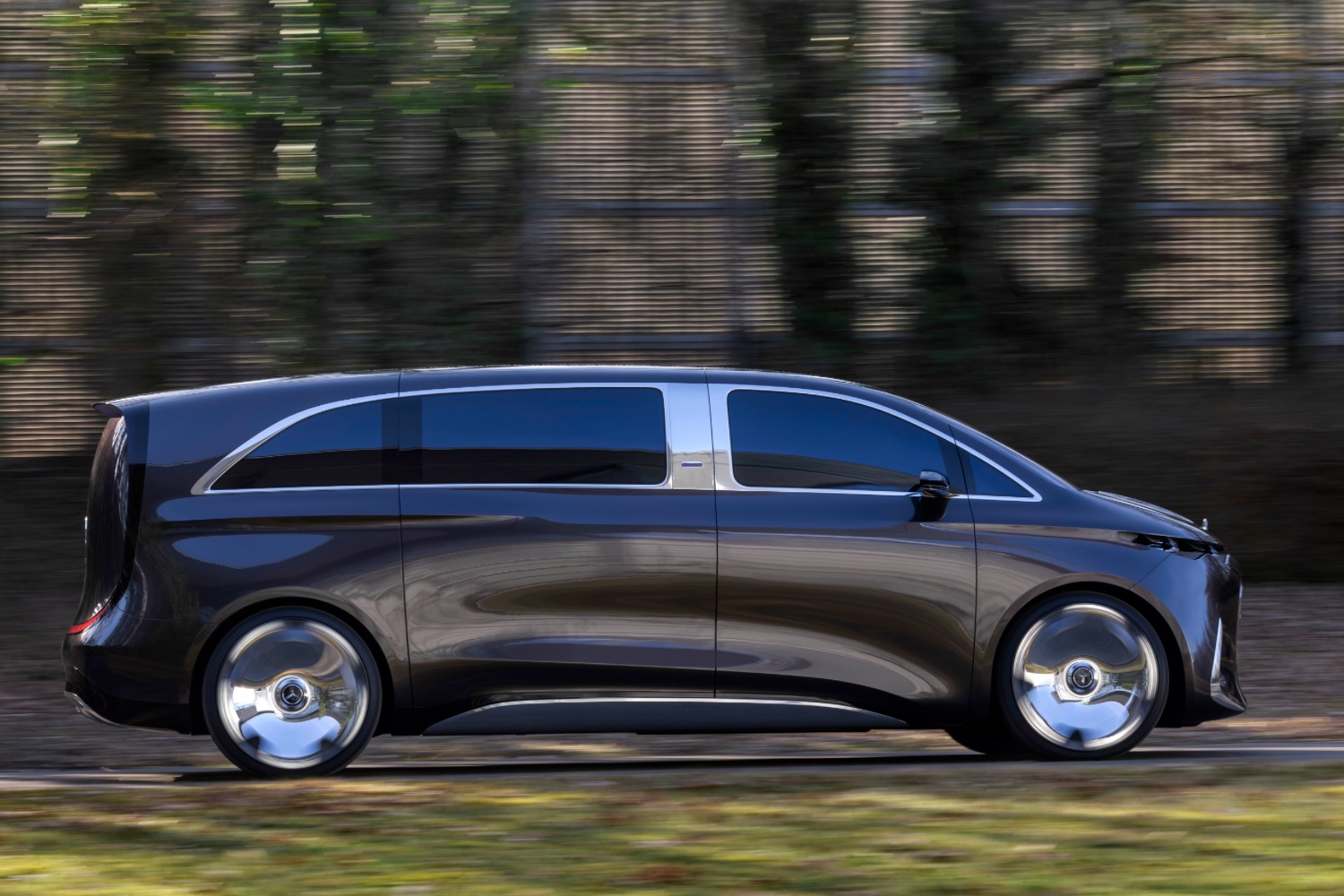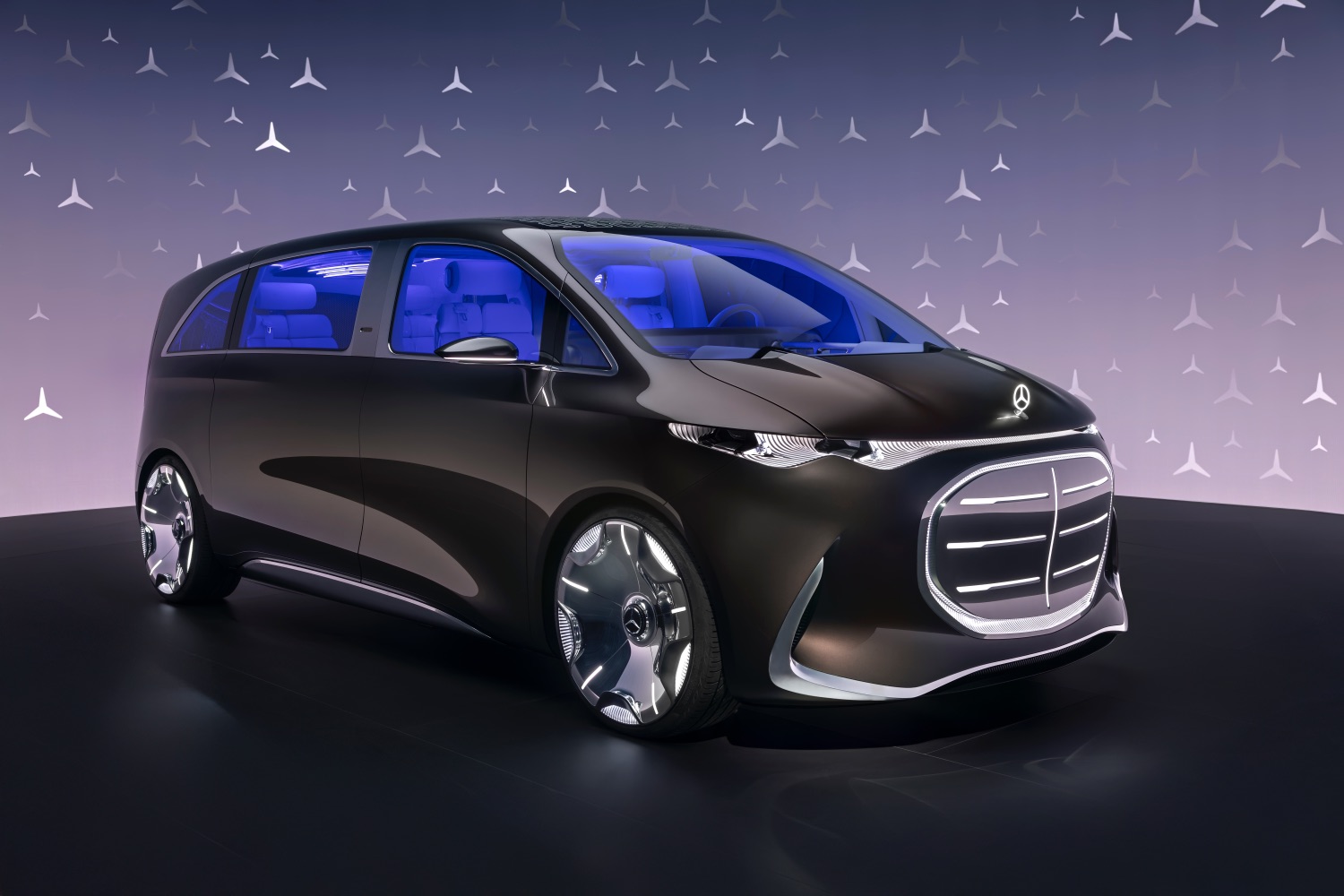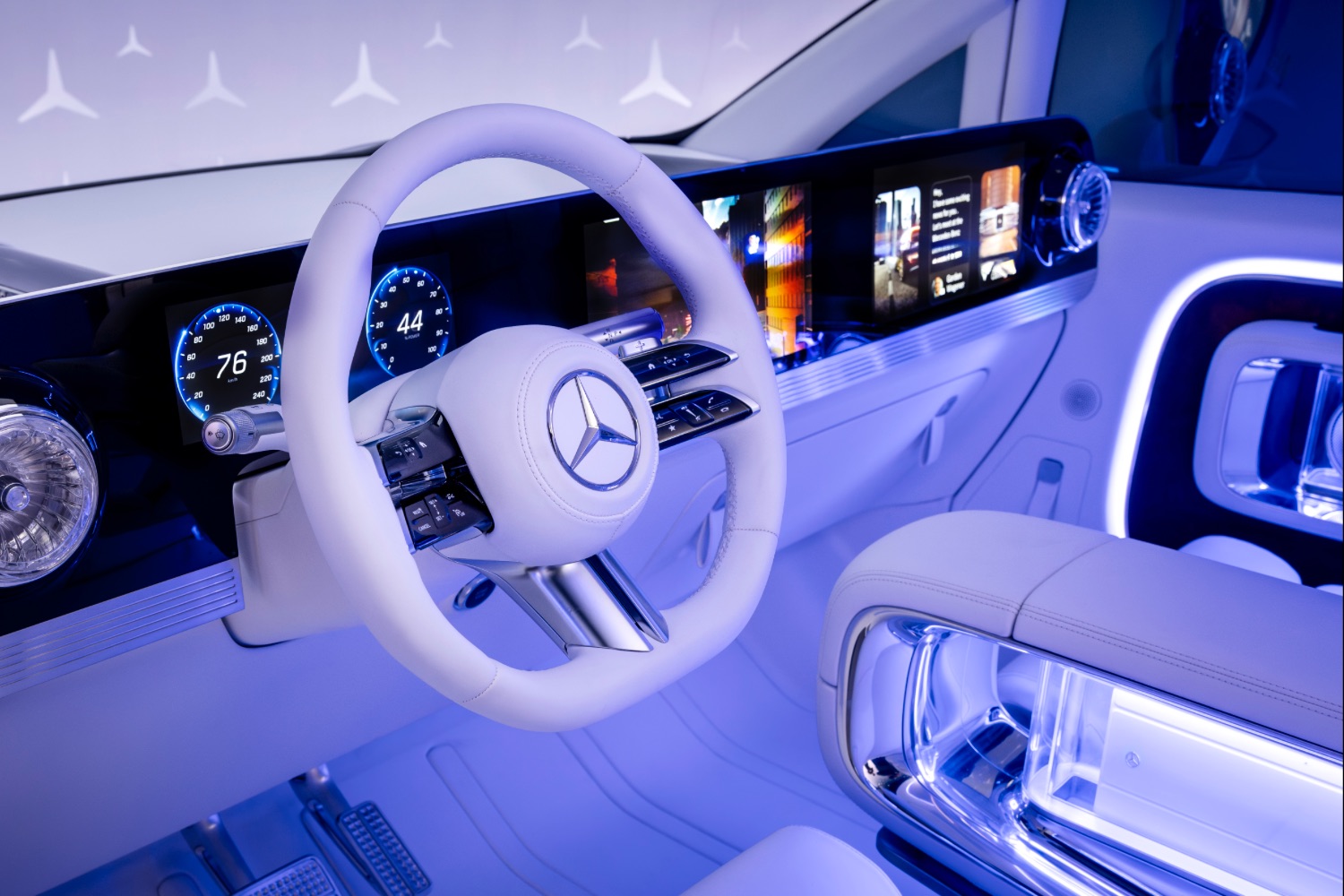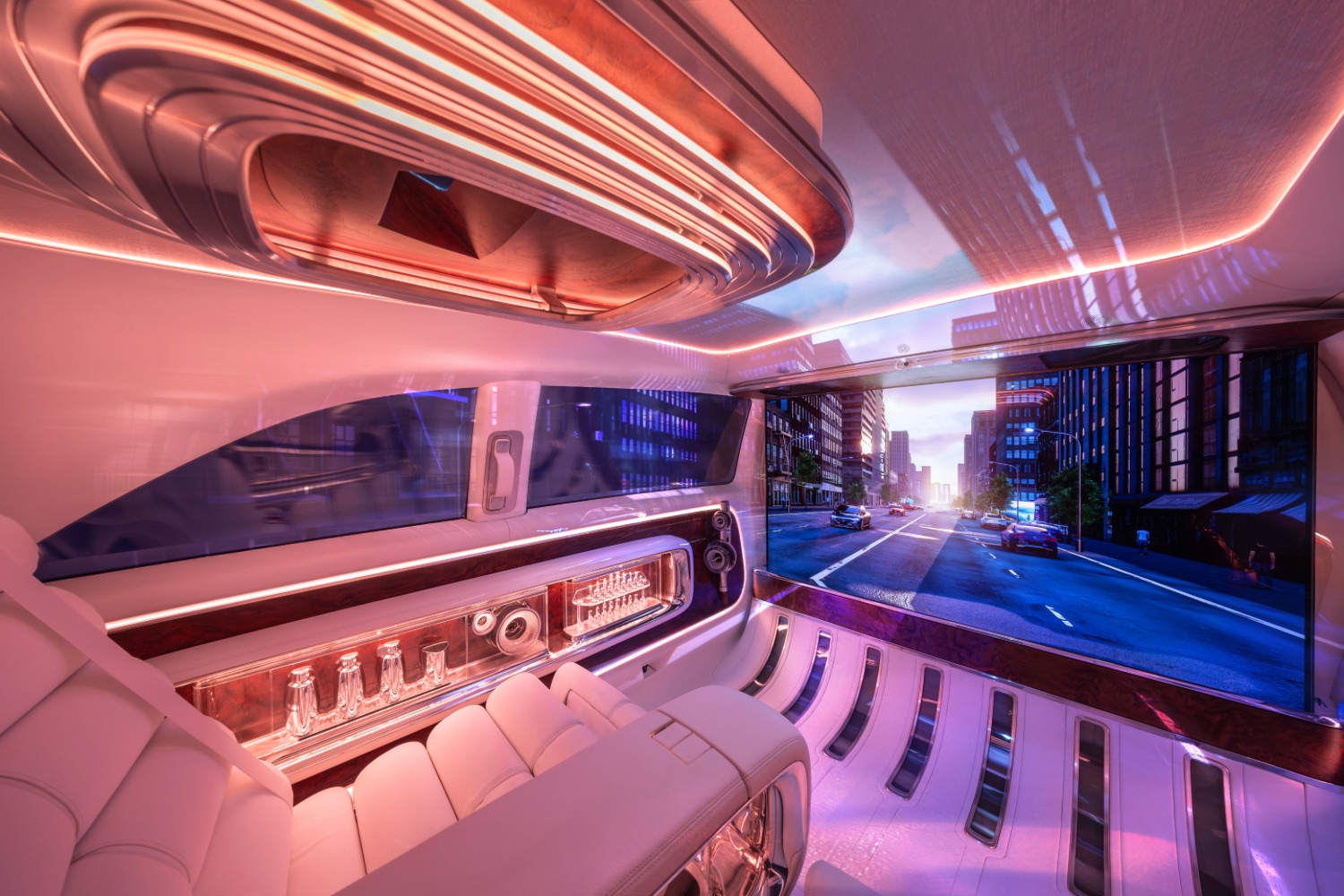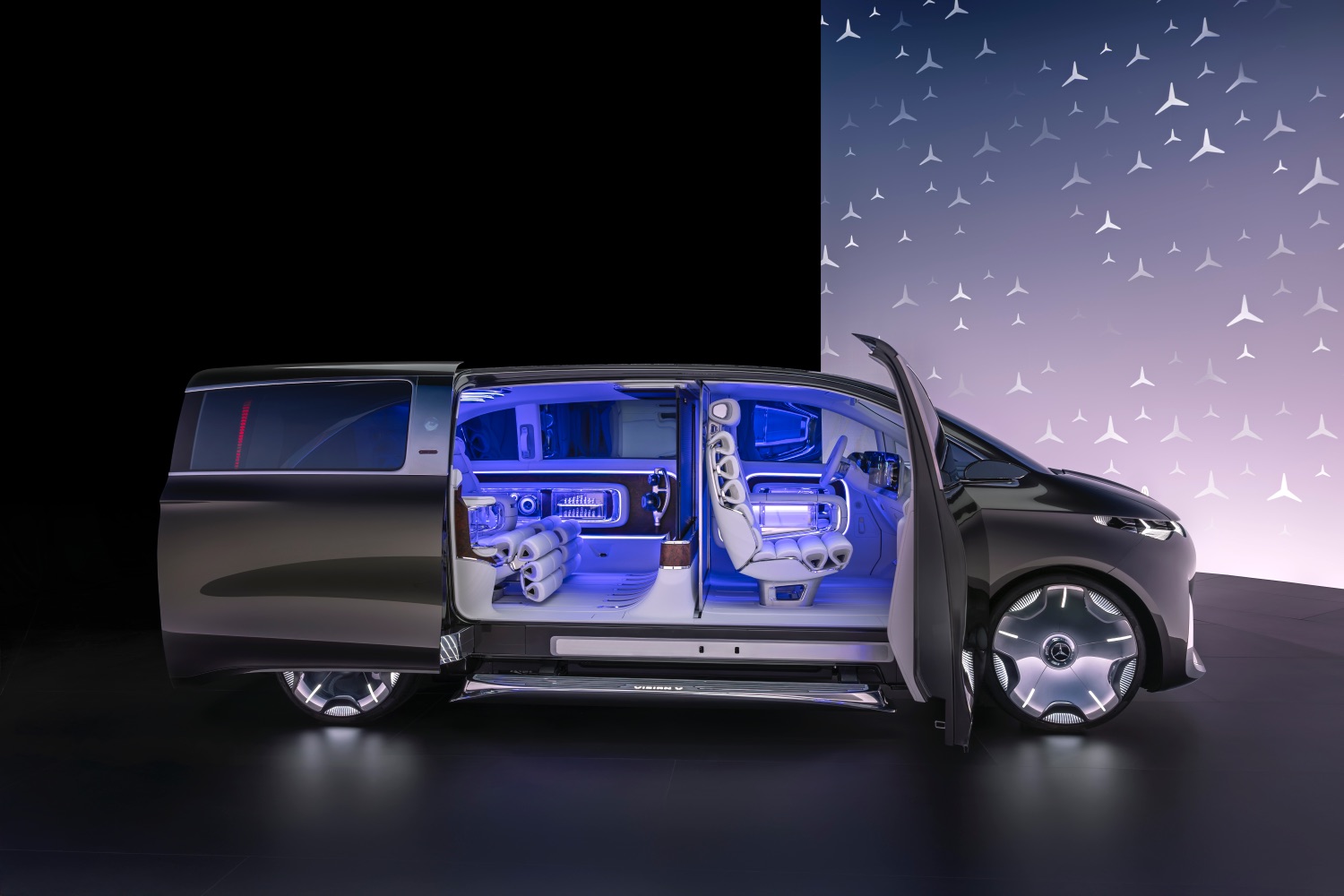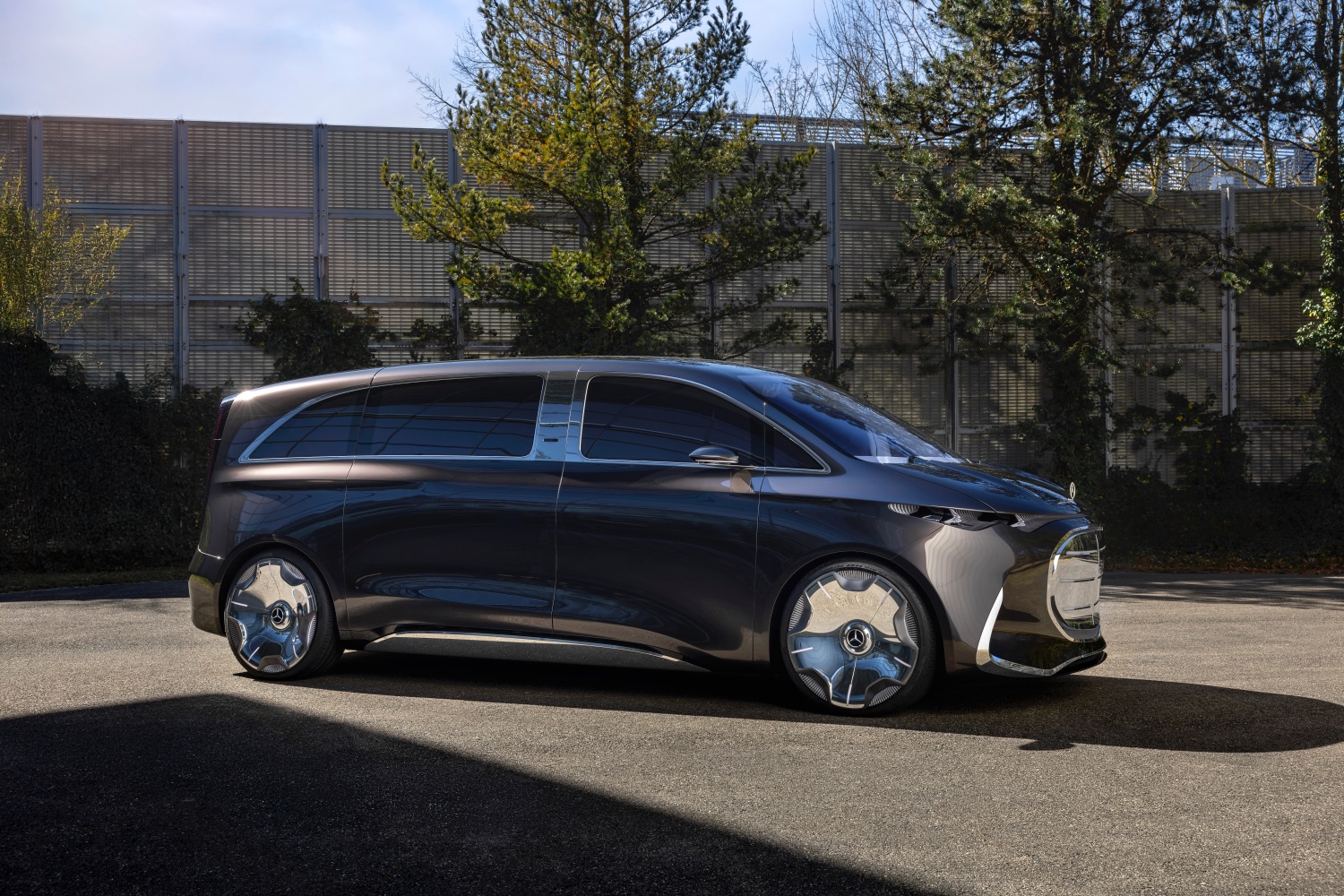Mercedes-Benz has confirmed a new electric van-based MPV will be added to its limousine range in future, and the final product is previewed in the new Vision V concept. Based on Mercedes' new electric van architecture, the newcomer is thought to be a replacement for the current V-Class, and will arrive on European roads in 2026.
How will the new V-Class look?
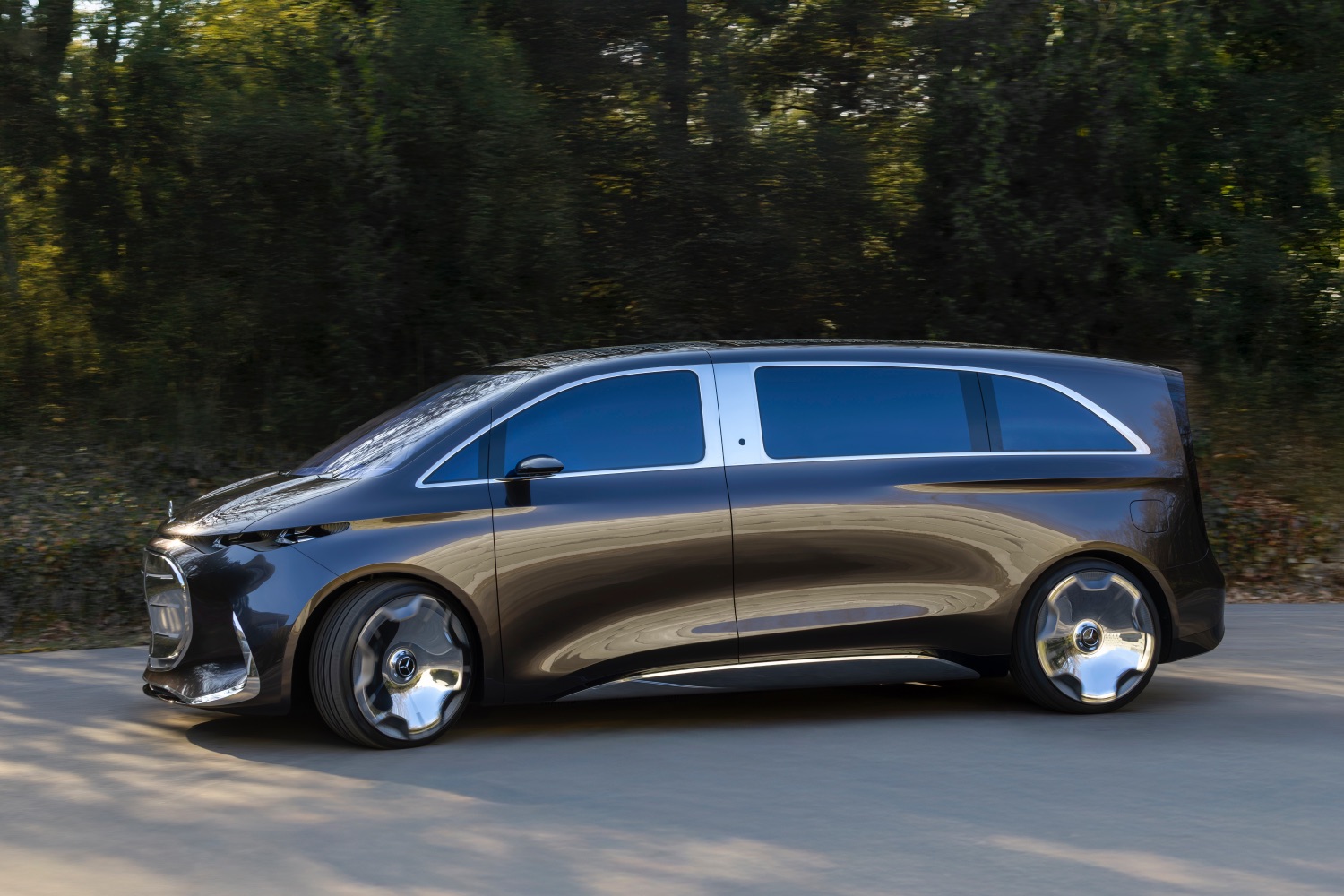
For the time being, the only indication of how the new model will shape up is provided by the Vision V show car, which is supposed to preview a top-end version of the upcoming MPV.
The focus is clearly more on the interior than the exterior, but Mercedes-Benz has confirmed the Vision V has a more aerodynamic design, and the images reveal a bold, illuminated grille-style panel and some modern headlights. Mercedes says the vehicle has “welcome screens” on the B-pillars, giving passengers a “taste of the exclusive, digital world of experience in the interior.”
Mercedes-Benz has also claimed the Vision V feels “sporty” because of its new pronounced “powerdomes” on the short bonnet, as well as its large wheel arches. In the concept car, it's all set off with anthracite-coloured, metallic alubeam paintwork and chrome-plated window surrounds, as well as enormous 24-inch wheels with illuminated louvres. Similarly, the rear window is framed by over 450 three-dimensional illuminated louvres that serve as taillights and brake lights.
And what about the inside?
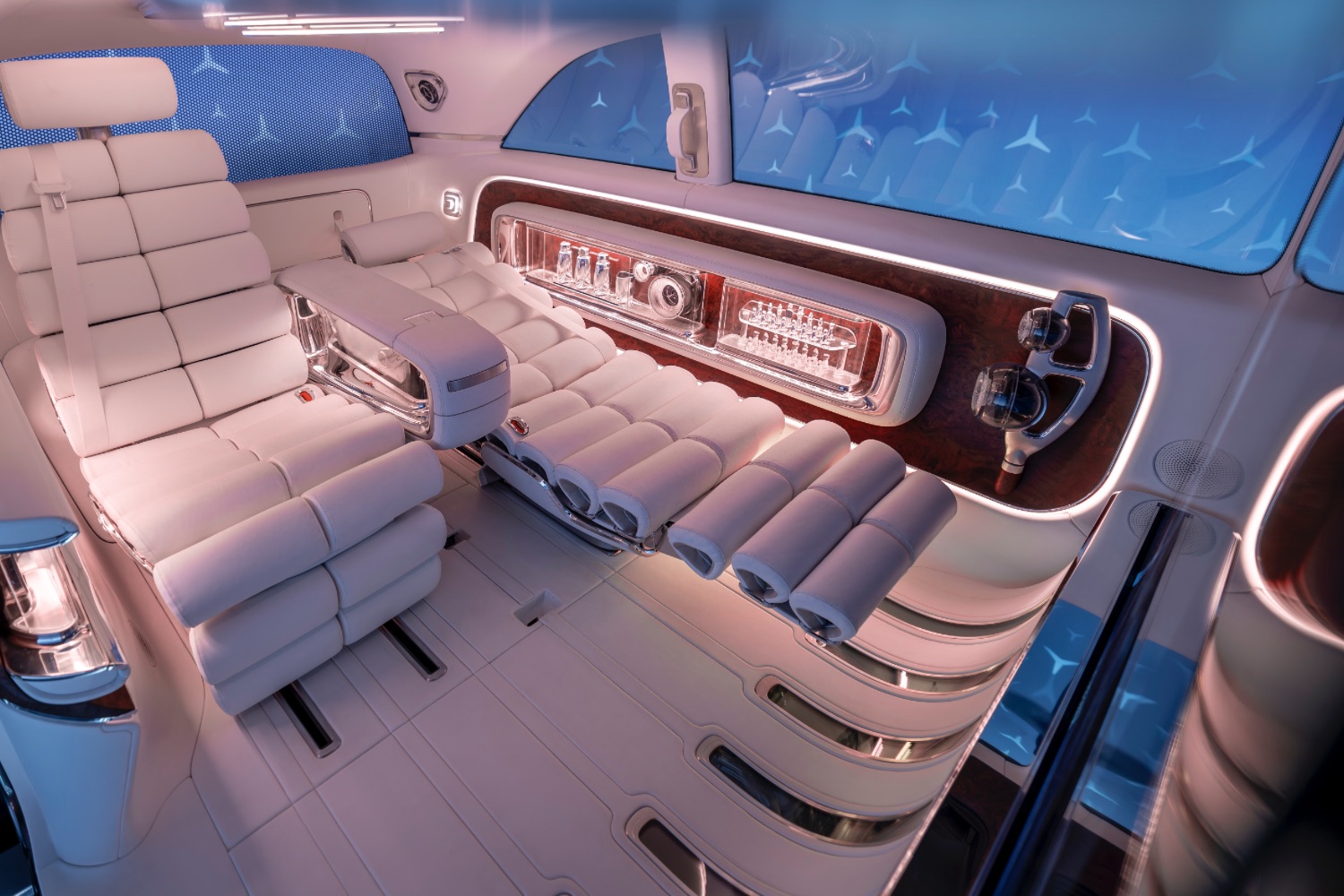
Now you're talking. Mercedes is adamant the Vision V has a “lounge character,” with white leather and silk upholstery, as well as open-pore burr wood. Cabinets designed to look like sideboards line the sides of the cabin, providing storage space for accessories such as a handbag, sunglasses or smartphone. It also offers storage for a game controller and one of the 42 loudspeakers of the surround-sound system with Dolby Atmos, which work in tandem with the massive 65-inch cinema screen.
More of those speakers live in glass housings around the cabin, but the 4K screen is still the focal point, folding away into the floor when stowed. And the Vision V backs the screen up with projectors that turn the side windows into secondary screens for a 360-degree experience.
But those windows are more than just backup screens. Like the partition between the front seats and the rear cabin, the windows can be changed from transparent to various levels of desired opacity, thanks to liquid crystals in the glass. Apparently, the system allows the passengers to change the natural light in the cabin or improve privacy.
Then there's the (rather important) question of the seats. Mercedes calls them “first-class” and claims they're styled on chairs you might find in a sitting room, with aluminium bases and tubular cushions. Designed with comfort at the forefront, they can be reclined to a flat position, and are supplemented by ambient lighting and a fragrance that's housed in a little bottle behind the centre console.
What about the driving seat?
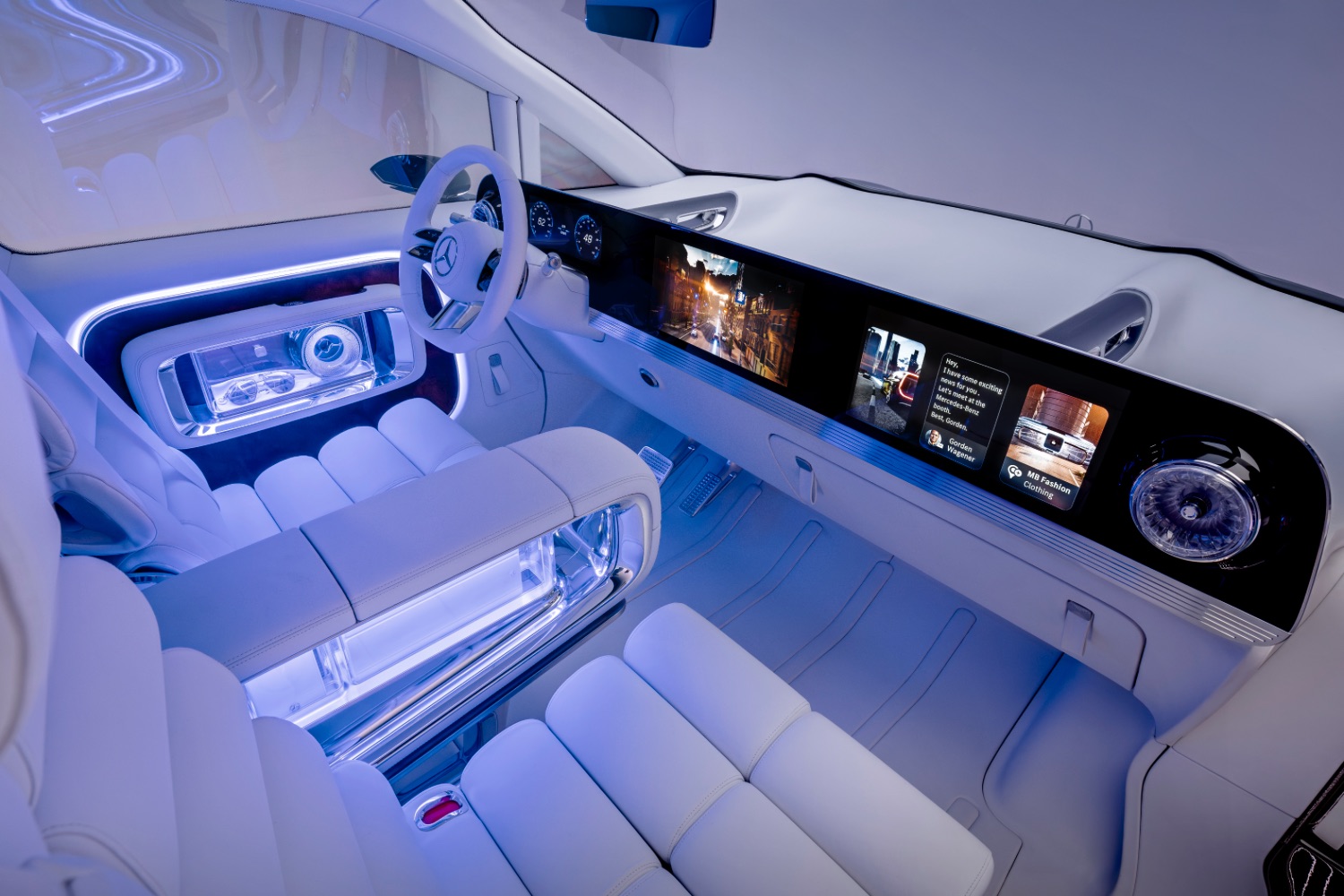
Up front, the Vision V gets plenty of technology, too, including a three-screen infotainment system that extends the full width of the dashboard, providing surround navigation and a virtual instrument display, as well as other real-time information. However, the Vision V is clearly more geared up for those in the back.
And under the skin?
Again, Mercedes-Benz's focus is clearly on passengers, because there's no great detail about the propulsion system. Clearly, the Vision V has an all-electric powertrain, but the brand has released no details about how the system works, which motor drives the wheels or how big the battery will be. All we know is the Vision V sits on the company's Van Electric Architecture (VAN.EA), which is new to the brand.
When will the production car be here?
Mercedes-Benz says we can expect the production model, which we expect to be called the V-Class, in 2026, and the top-of-the range models will take some features from the Vision V. Pricing is yet to be confirmed, and we don't even know exactly how the new model will look. Expect to hear more in the next 12 months or so.

